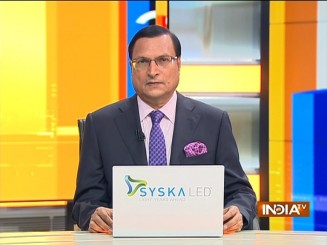 Air pollution in Delhi-National Capital Region has touched ‘severe-plus’ category for the third consecutive day, with people in the capital gasping for breath. Delhi government has asked 50 pc of its staff to work from home.
Air pollution in Delhi-National Capital Region has touched ‘severe-plus’ category for the third consecutive day, with people in the capital gasping for breath. Delhi government has asked 50 pc of its staff to work from home.
As early morning smog covered the capital, visibility at Delhi airport was 800 meters on Tuesday at 7 am. Since Monday morning, GRAP (Graded Response Action Plan) Stage 4 is in force, with all schools and colleges of Delhi University closed. Blanket ban has been imposed on construction/demolition activities, while entry of diesel trucks into Delhi has been prohibited.
Despite all-out efforts, air quality index is not improving. Experts say, if the situation continues, people in the capital region will be forced to inhale poisonous air. Everything now depends on wind speed and light rain, which can improve the air quality index.
Delhi Environment Minister Gopal Rai has requested Union Environment Minister Bhupendra Yadav to convene an urgent meeting to explore carrying out of artificial rain through seeded clouds as an emergency measure.
Leaders of different political parties are presently engaged in blame game, but the only solution available is this: If strong winds blow in the capital, or if there is sudden rain, the air quality index will improve dramatically. Blowing of wind cannot be controlled artificially, but artificial rain is being projected as one of the solutions.
Some people have suggested that if Dubai can carry out artificial rain through cloud seeding, why can’t Delhi? According to one report, efforts were made to bring artificial rain in Delhi in 2019 and 2021, but proved futile.
For cloud seeding, one needs clouds in the sky and a bit of moisture in the air. In winter, air in Delhi is usually cold and dry. Cloud seeding process can only convert moisture in the air into rain drops. Had there been clouds in Delhi’s sky and a bit of humidity in air, artificial rain was possible. Experts are ruling out this option for the moment.